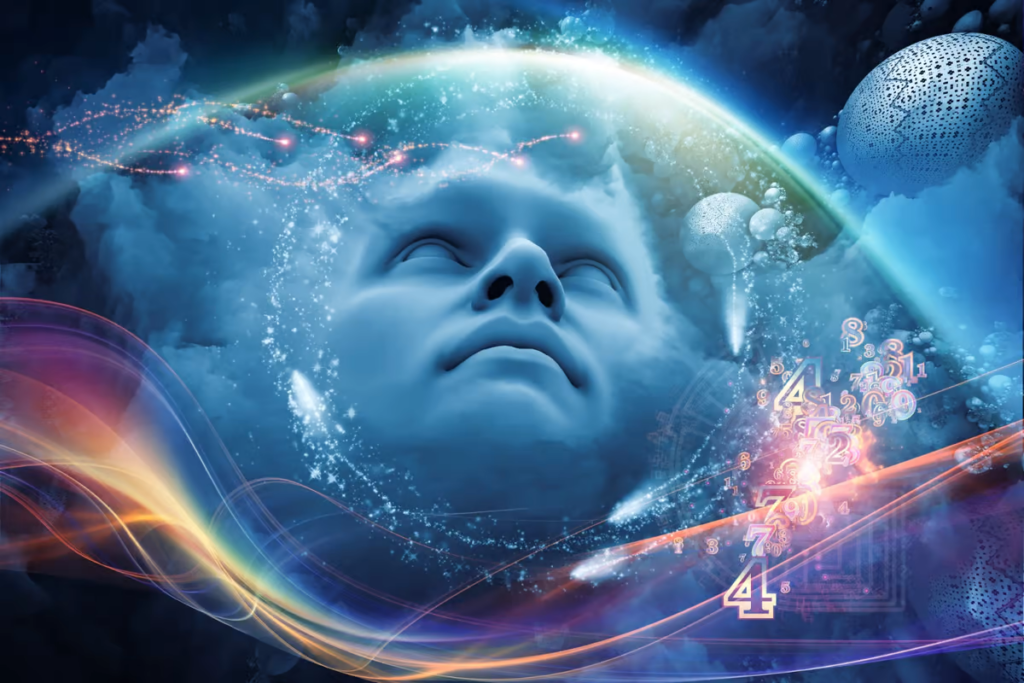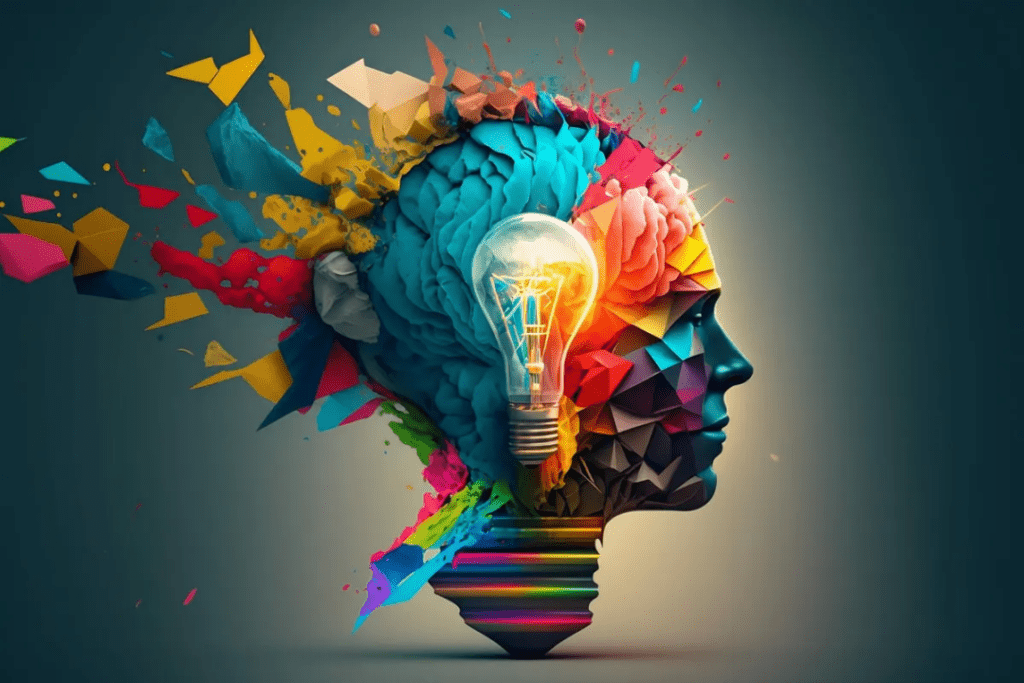
#1: Imagining things that don’t exist
The promise of psychedelics to enhance creative thinking is generally described as the ability to use imagination and original ideation to find solutions to a problem or achieve goals. Earlier this year, a study looking at the effects of LSD on creativity found a shift of cognitive resources “away from normal” and “towards the new.” Psychedelic-induced pattern breaking, originality, convergence, and symbolic thinking are all fundamental phenomena for creativity.
Hallucinating people can have profound experiences which can unlock creativity. You might walk along a path in a forest, see colorful vibrating symbols or patterns emerging anywhere you look, find that everything seems painted in the warm glow of the golden hour, and feel an overwhelming sense of oneness. Fragments of knowledge may surface suddenly and unexpectedly into consciousness, and psychologically heavy thoughts of the past can be re-experienced as trivial. Bad experiences are not uncommon but they can also feel inspirational and valuable later through narrative sense-making and integration work.
Psychedelics are powerful nonspecific amplifiers, a term the Czech psychiatrist and LSD experimenter refer to the dialing up of intensity of one’s conscious or unconscious thoughts and emotions in the tripping brain. In fact, these amplified ideas and feelings can be so powerful that some credit psychedelic plants with provoking the rapid increase in size and volume of our brains that occurred roughly 200,000 years ago, in a hypothesis known as the “stoned ape” theory. Terrence McKenna and his brother Dennis McKenna speculated that Homo erectus evolved into Homo sapiens after encountering and ingesting psychedelic mushrooms. This encounter, according to McKenna, sparked the rapid evolution of human cognition and inspired the earliest experimentations with art, language, and technology.
The brain on LSD shows higher resting state functional connectivity between the visual cortex and the rest of the brain.
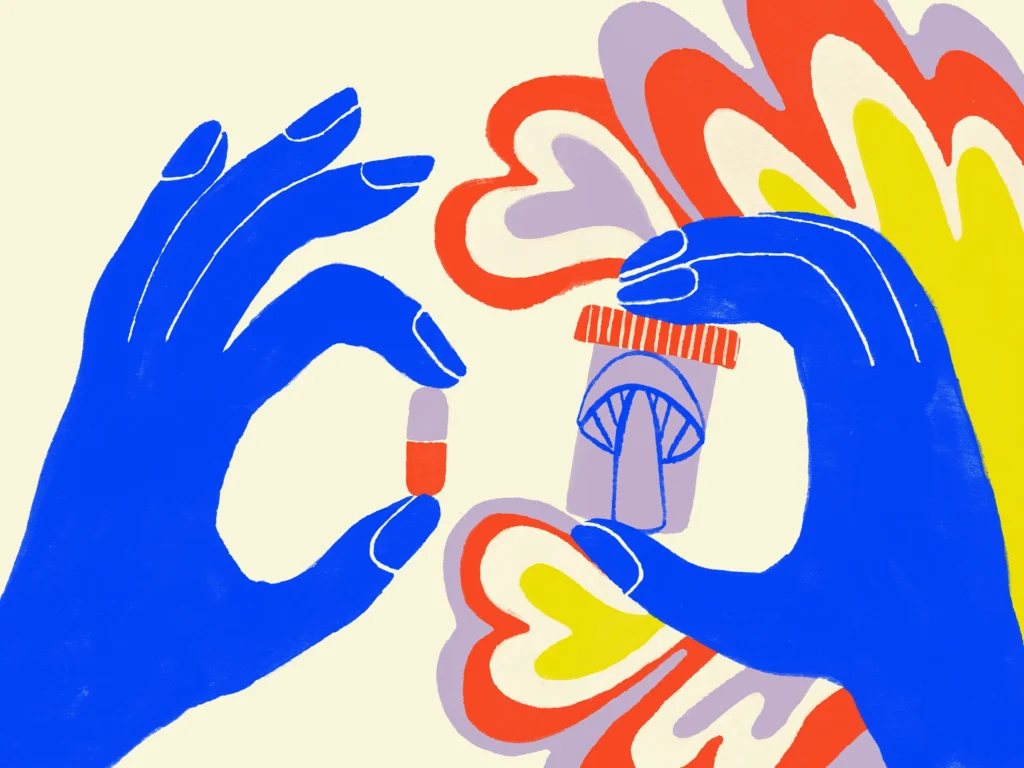
#2: Making novel connections
The formation of new connections in the brain, or neuroplasticity, is broadly speaking the nervous system’s ability to change in response to intrinsic or extrinsic stimuli by reorganizing its structure, functions, or connections. Neurons modify the strength and efficacy of synaptic transmission through a diverse number of change mechanisms.
Psychedelics induce rapid changes in plasticity mechanisms on a molecular, neuronal synaptic, and dendritic level, after a single or repeated administration. In other words, you have more neural signal diversity while tripping.
A 2016 study by a group revealed the effects of LSD on the human brain through neuroimaging techniques such as fMRI and magnetoencephalography (MEG). Essentially, the brain on LSD shows higher resting state functional connectivity between the visual cortex and the rest of the brain. Seeing with eyes-closed suggests “the visual cortex behaves ‘as if’ there is external input when there is none,” according to the paper.
Creative thinking is a result of divergent (lateral) thinking and enhanced cognitive flexibility, enabled by neuroplasticity. After both single and repeated administration, psychedelics have been demonstrated to promote structural and functional neural plasticity, a mechanism crucial for cognitive creativity.
#3: Connecting the dots
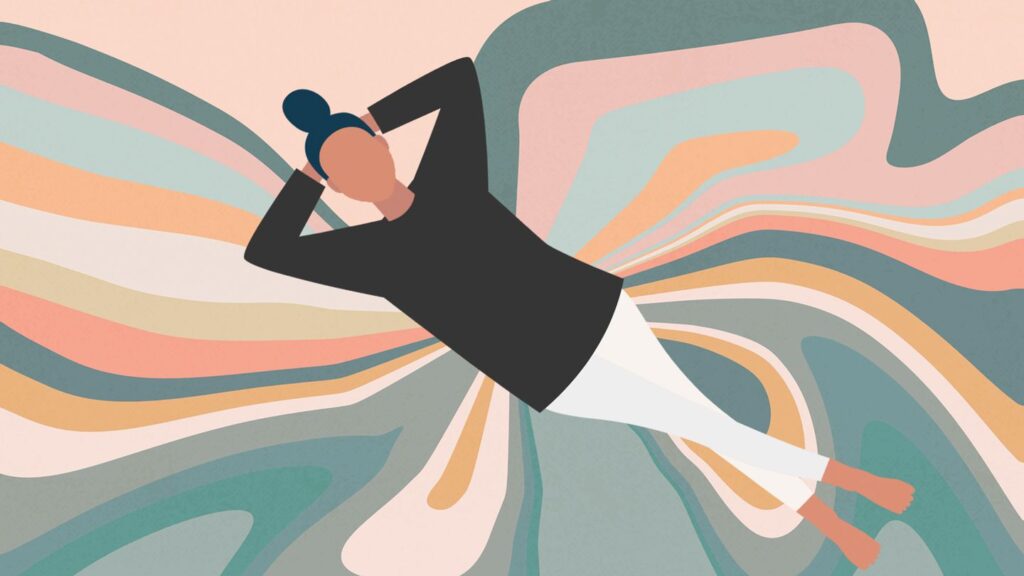
Conceptual models of the human brain suggest a hierarchical network architecture, where each layer has a series of functions with a defined role, which in turn display distributed connectivity across networks. Creative cognition is related to the ability to generate connections between seemingly unrelated concepts in one’s memory archive. We can hypothesize how an increase in connections increases our ability to think creatively.
A study from April 2022 evaluated the impact of psilocybin on brain functionality in clinical trials of depression. It confirmed increased connectivity of the default mode network and other higher-order networks, while the connectivity with the default network itself decreased. Brain network modularity was “significantly reduced one day after psilocybin therapy,” which the researchers say implies a global increase in functional connectivity between the brain’s main intrinsic networks. And that is foundational for creative thinking.
#4: Enabling breakthrough moments
Anecdotal reports of psychedelic-affiliated creative breakthroughs abound, including the claim by Nobel Prize-winning chemist Kary Mullis that his invention of polymerase chain reactions (PCR), one of the most fundamental tools of molecular biology, might never have happened without LSD. As he put it, “I could sit on a DNA molecule and watch the polymers go by. I learnt that partly on psychedelic drugs.”
Another creative genius, Steve Jobs, said “Taking LSD was a profound experience, one of the most important things in my life… LSD shows you that there’s another side to the coin, and you can’t remember it when it wears off, but you know it. It reinforced my sense of what was important.”
Science is catching up to and analyzing these eureka moments of creative breakthrough. A study from 2016 by the Beckley / Imperial Research Programme found that LSD had a “pronounced global effect” on brain entropy, the variety of possible compositions, and the number of neural states a brain can access. Brain entropy increases changes in openness and openness is linked to “imagination, aesthetic appreciation, novelty-seeking, non-conformity, and creativity.” In other words, those precious aha! moments.
#5: Experiencing psychedelic creativity
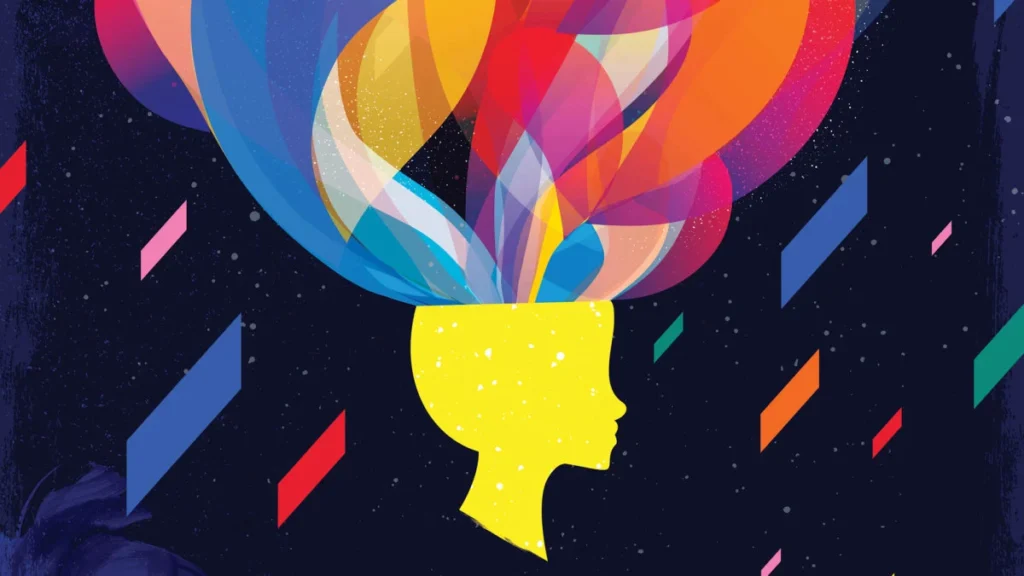
Evidence of what you might call psychedelic creativity goes back more than a half century. A 1966 study explored the effects of psychedelic agents on creative problem-solving and found an increase in creative ability that lasted for some weeks after the so-called “problem-solving session.”
More recently, a 2019 study demonstrated that psilocybin a) induced a time- and construct-related differentiation of effects on creative thinking; b) increased ratings of spontaneous creative insights; c) decreased deliberate task-based creativity; and d) that even seven days after psilocybin, the number of novel ideas increased.
The emphasis on the distinction between spontaneous and deliberate creative cognition is crucial because it indicates, for example, that an artist isn’t going to draw “better” but will have a novel way of seeing the subject and translating that into an artwork.
#6: Warping your environment
Artists create an environment for their creative process and psychedelics might just be part of this environment.
In 1965, an American psychologist and philosopher, investigated psychological profiles of highly creative individuals and proposed a list of character traits common among them such as: enthusiasm, the ability to find meaning, intuition, being introverted, and having perhaps some slight psychological imbalance.
You may think your exploration is artistic and phenomenal—but you still have to do the work.
Creation can be physically and mentally very demanding. The salience of being in the right mindset and controlling the setting or environment is much discussed in clinical circles for psychedelic-assisted therapy. Equally, mindset and environment are vital for a creator, who is often highly sensitive, being greatly affected by stimuli such as sound, smell, and even people’s moods. Creatives often feel like outsiders and that disconnectedness can create or heighten stress.
Psychedelics can help us relax, quiet our inner critic, enable openness, allow us to feel more connected, and ultimately to experience complex visions.
#7: Revealing the limits of your own creativity
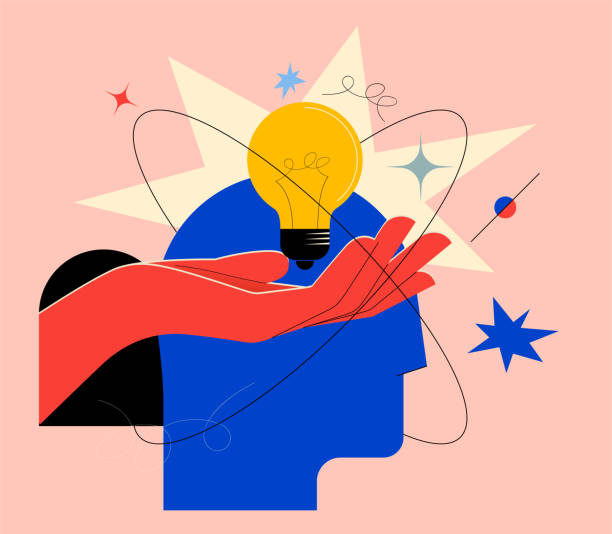
You may find novel ways of thinking when being stuck on a specific creative problem that needs solving, but you won’t miraculously know how to play the piano. You may think your exploration is artistic and phenomenal—but you still have to do the work.
Creative thinking is a process. At the end of the day an artist without the skill set and the endurance needed to finish an artwork will never create a masterpiece, even under the influence of psychedelic substances.
And as we come down, retaining a sense of illumination, or equipped with new revelations and insights, altering cognition with psychedelic substances is very powerful. Aldous Huxley hinted that the playfulness and openness of psychedelics might not only be a conduit to our best creativity, but also to a long and healthy life. Or as he put it, “The secret of genius is to carry the spirit of the child into old age.”

